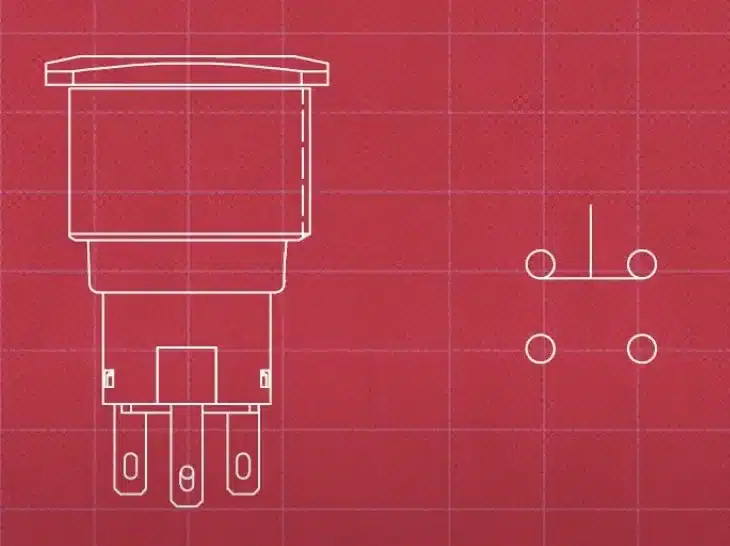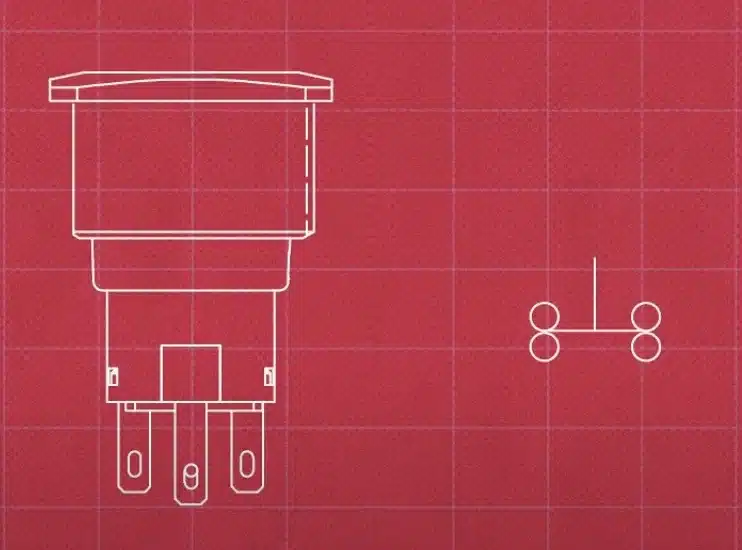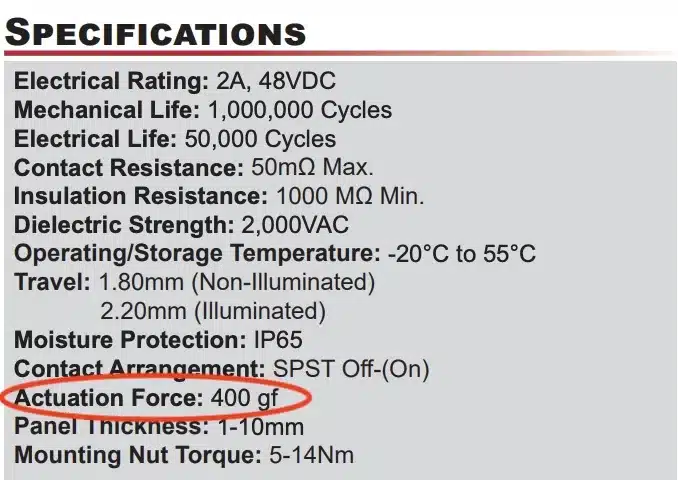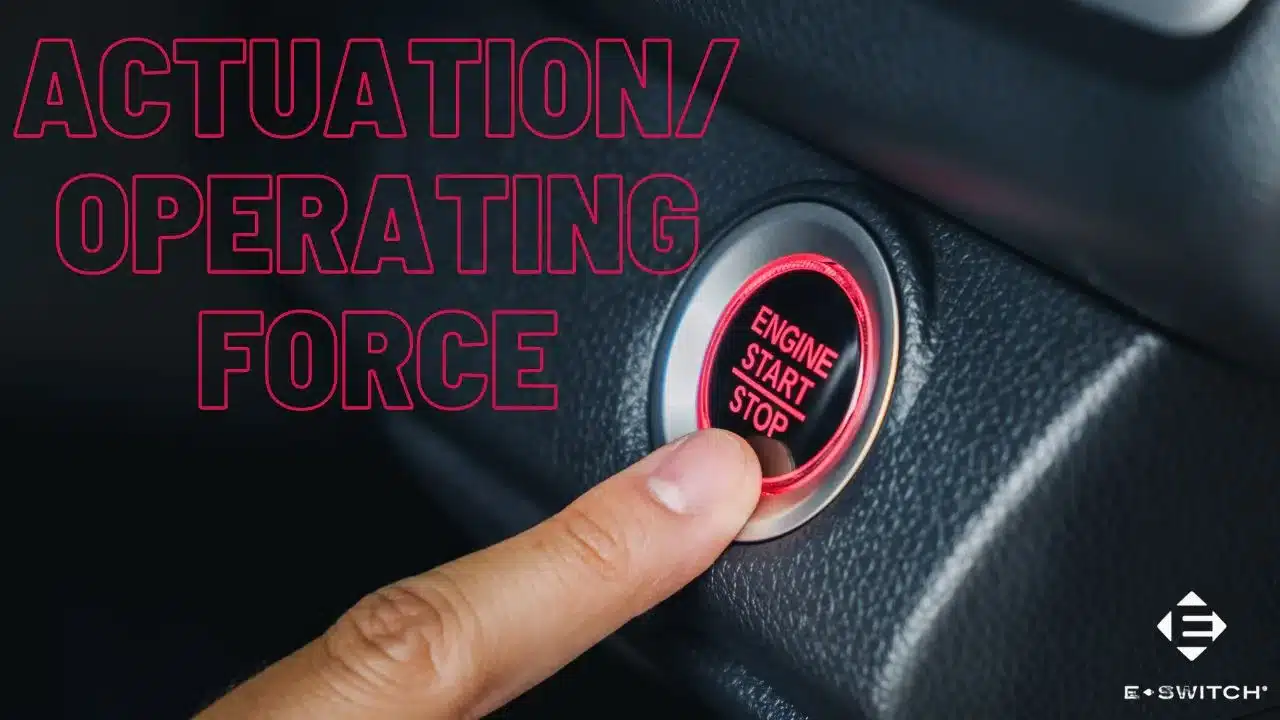If you’ve ever looked at a switch’s data sheet then chances are you’ve come across the term operating force or actuation force. Well, in the switch world they mean the same thing. Let’s explore.
So, what does operating or actuation force actually mean?
It refers to the amount of force applied to the switch’s actuation mechanism to change the motion or cause the contacts to snap over. More simply put: how hard you have to press a switch to make it work.
Actuation and Operating Force
For this example, let’s say we have a simple on/off latching switch. Here it is in the off position.

When the actuator is pressed with a certain amount of force, the switch changes from the off position to the on position.

In many types of switches an audible sound can be heard as the force suddenly fluctuates from off to on or vice versa.
The amount of distance the actuator moves before changing the state is called travel.
How is Operating/Actuation Force Measured?
In most cases in the switch industry, you’ll see actuation force measured in grams or gf (gram force). However, it can be measured in any force unit — newtons (N), ounces (oz), pounds (lb), etc. It all depends on the final application and what number is easiest to read.
For example, one newton roughly equates to 102 grams, but if you want to be really specific it’s 101.9716213g. Who wants to say that? So for larger switches like anti-vandals, you might see an actuation force written as four newtons (4N), but for smaller tact switches you might see it written as 350gf±100gf.
The 350gf is the nominal actuation force and the plus/minus 100 means there’s a tolerance of 100 grams. Because every part might be slightly different, it may function at 250 or 450 grams.
Example Data Sheet

